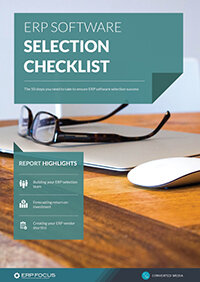ERP features for small businesses to consider
While there is a large degree of hyperbole when it comes to ERP these days, when it comes down to it ERPs are still ultimately resource management systems. I don’t necessarily mean ‘things’ and ‘people’, but how those resource elements interact and combine to enhance overall small business efficiency, or in short, more money on the bottom line.
To achieve this goal, one must leverage several core feature sets, since these are the bedrocks that business is based on. These include:
Streamlined process applications
- Project management
- Production control: an essential for manufacturers
- Inventory control
- Logistical management
- Systems security
You could also consider integrated HR and CRM functionality if you have the budget, your company is big enough to warrant it, and you don’t already have a system in place.
Integrated financial applications
- GAAP Accounting
- Consolidated Financial Management
Direct reporting
Reporting, preferably with real-time data, is a major benefit of implementing an ERP. Alongside the broad-level feature-sets outlined above, here are a few reports to look for when shopping for ERP systems:
- Sales: for example quotations list, list of sales orders
- CRM: for example contact list
- HR: for example personal FTE information, emergency contact
- Project management: for example functional timelines
- Production control: for example, product line counts, finished goods tallies
- Inventory control: for example, bin counts, distribution logs, shipping logs
- GAAP accounting: for example GL, AR, AP, payroll
- Consolidated financial management: for example divisional reporting
- Systems security: for example failure/recovery reports
Everything else; and we mean everything.
In this area, we identify various follow-on tiers that can be applied to a small-business ERP platform. Some of these elements include:
- In/outbound business intelligence – the goal is to allow the enterprise to ‘see and respond’ to the totality of its market in real-time.
- In/outbound mobility – the goal is to directly bind the customer to the enterprise, buy means of a host of communications mechanisms.
- In/outbound social networking – the goal is to create a virtually-persistent channel between customer and business.
- Automated operational scripting – the goal is to alleviate manual processing throughout the system, and the enterprise at-large.
Each of these requirements sections apply to the same value sets ranging from the elimination of process waste to reduced cost, ultimately leading the enterprise to achieve enhanced revenues over time.
Free white paper

Small business ERP: five steps to success

Featured white papers
Related articles
-

Top ERP systems for small businesses
Which ERP solutions are best for small business needs? Information on features, scalability and m...
-

CMMC Compliance: What Aerospace and Defense Manufacturers Need to Know
Key insights on CMMC compliance, deadlines, and securing DoD contracts with CMMC 2.0 certificatio...
-

How to conduct a thorough ERP audit
The types of ERP audit, and step-by-step instructions on how to audit your ERP system



